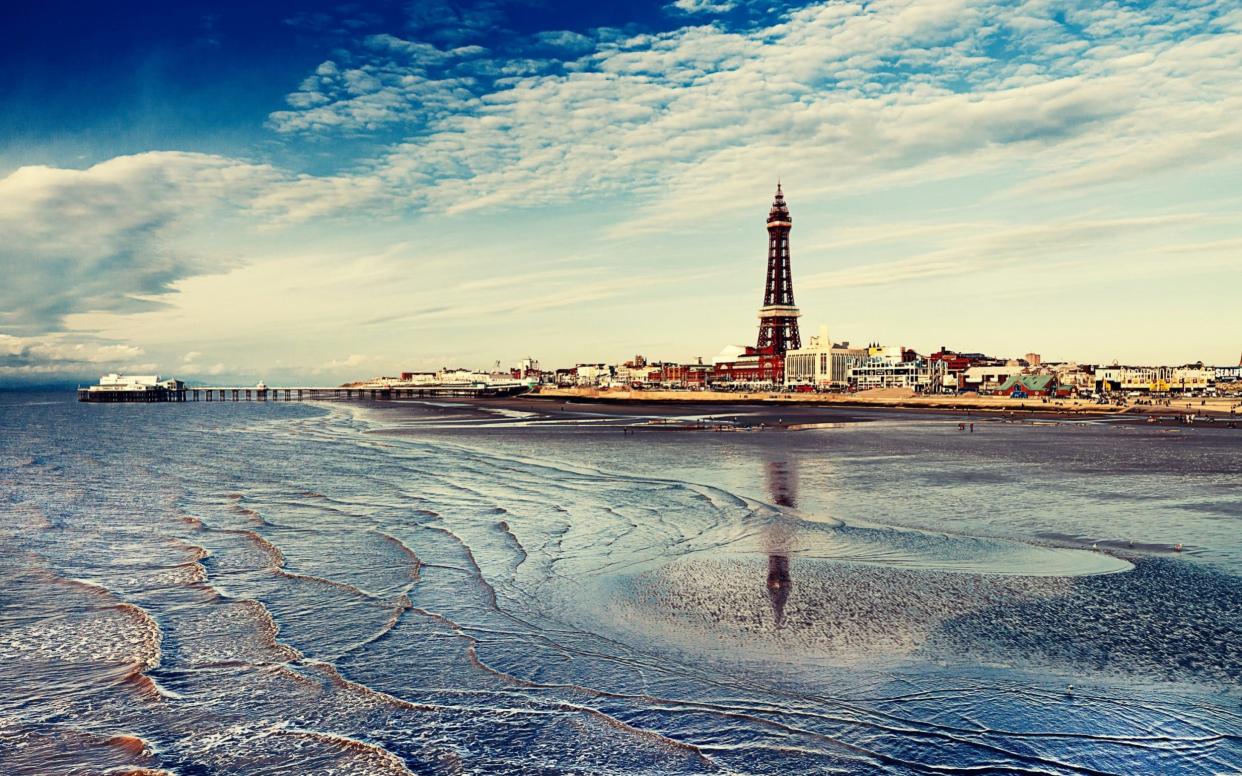Why is there something sinister about British seaside towns?

The millions of British holiday makers heading for the seaside this Bank Holiday weekend may only be there to paddle in the waves, sit in deck chairs on the beach, take a donkey ride or sample the amusement arcades and the carousels. But in reality, something far darker lurks beneath the fun.
There is something distinctly sinister about British seaside towns, as I discovered in a making a television series for CBS Reality over the past six months. No one can quite explain exactly why, but there can be no doubt that the seaside goes hand in hand with murder.
Take Blackpool, for example, once one of Britain’s favourite Bank Holiday destinations. It was there that the 20-year-old Nigerian born Stephen Akinmurele, who was brought up on the Isle of Man by his grandmother, brutally murdered Eric and Joan Boardman, both in their seventies, as well as landlady Jemmimah Cargill, also in her seventies.
It then emerged that the tall, muscular barman in a local night club had already killed two other elderly women on the Isle of Man, taking the number of his victims to five; all before he reached the age of 21.
He stalked elderly women and took a depraved delight in strangling them, then sitting with their dead bodies before setting fire to their homes in an effort to conceal his crimes.
There is something distinctly sinister about British resorts. The seaside goes hand in hand with murder
Akinmurele might well have become one of this country’s most notorious serial killers – he was certainly one of the youngest – had he not hanged himself in Strangeways prison in Manchester on August Bank Holiday Monday in 1999, just before he was due to stand trial. His death meant his dreadful crimes received almost no publicity.
Two years earlier, and just down the Lancashire coast at Southport, the commodore of the local sailing club, Paul Longworth, telephoned the police on January 8 1997 to claim that he had come home to find his wife Tina hanging from the bannister of their home, apparently having committed suicide. She had done no such thing.
In fact, Longworth had killed her with a rope from his sailing club and staged her hanging, spreading photographs of their two young children beneath her feet as some sort of bizarre explanation for her suicide. Longworth’s plan began to fall apart when the post mortem revealed 36 scratches and bruises on Tina’s body, and detectives discovered that their marriage had been far from happy.

This seaside crime was all the more despicable because Tina Longworth had been killed by her husband while their young children were asleep in the house, and he had provided himself with an apparent alibi in the form of a 37th birthday party at his sailing club. Longworth was eventually sentenced to life imprisonment, with a minimum term of 14 years.
We tell both those stories in the television series, as well as that of the extraordinary killing spree and subsequent manhunt for Terry Clifton, who killed Morecambe garage owner Tony Marrocco and his mechanic Paul Sandham.
Clifton was to give the police the slip on a string of occasions after the killings, including one remarkable moment when he was confronted in a seventh floor flat by armed officers, only to escape by lowering himself from the flat’s balcony to the one below, and then doing the same thing for a further five floors and 100 feet - earning himself the press nickname of ‘Spiderman’.
Clifton was eventually captured, and convicted, although he refused enter the court from the cells. It took no fewer than nine prison officers to force this brutal killer to hear the judge pass a life sentence.
Tragically, there have been many other murders committed in seaside towns.

Thirteen-year-old Billie-Jo Jenkins was pitilessly killed with an 18-inch tent peg and left in a pool of blood in Hastings. Seamstress and mother of two Heather Barnett, then aged 48, was bludgeoned with a hammer and had her throat cut in her home in Bournemouth by her Italian neighbour Danilo Restivo, who is now serving a ‘whole life’ sentence.
The psychopathic, Scottish born serial killer Peter Tobin buried the bodies of two of his teenage female victims under a sand pit he constructed for his son in the garden of their house in the seaside town of Margate in Kent. He is currently service three life sentences.
Salesman Graham Coutts was born in the Scottish seaside town of Leven in Fife, but committed his murder in the south coast of England at Brighton. There he strangled 31-year-old teacher and musician Jane Longhurst with her own tights in March 2003. The 35-year-old then kept her body in a storage unit before eventually burning it at a local beauty spot.
Why then does the British seaside seem to attract murder?

Is it because subconsciously the killers feel that the sea will wash away their sins? Is it because, in some curious way, the murderers see it as the end of the line? Is it because the towns often have transient populations, which rise and fall with the seasons? Is it because the seaside town invites its inhabitants to lose their inhibitions?
No one can be precisely sure - but no one can deny that the British seaside attracts murderers.
• Murder by the Sea is on CBS Reality (cbsreality.tv/uk) on Mondays, 10pm


